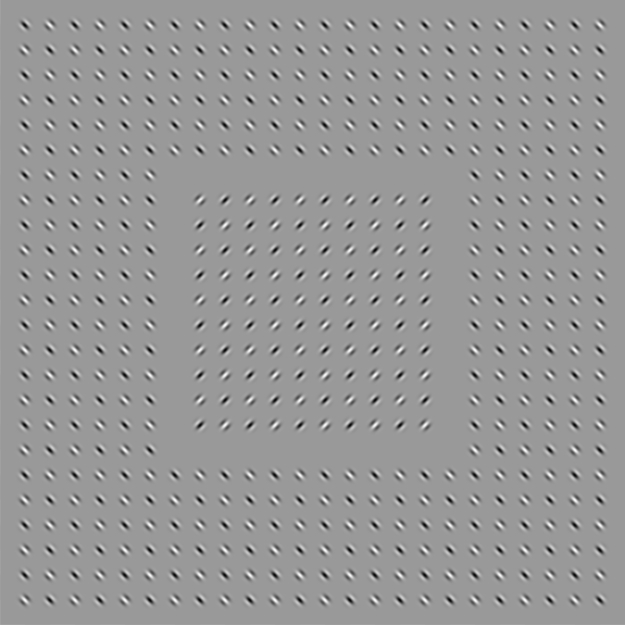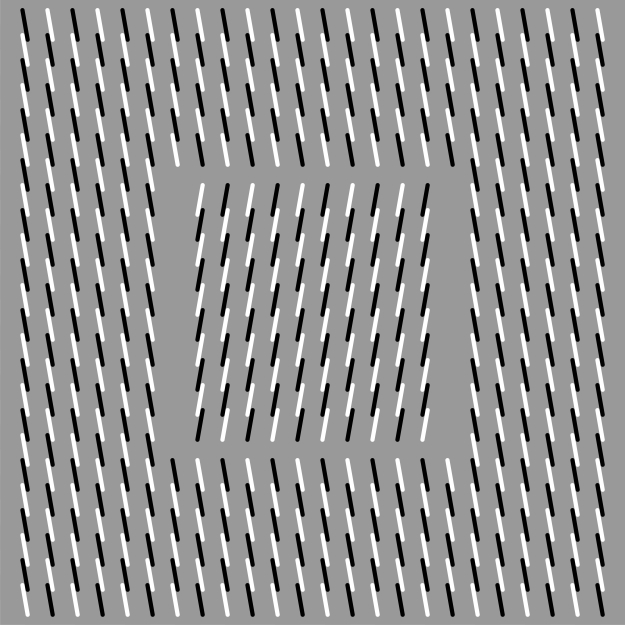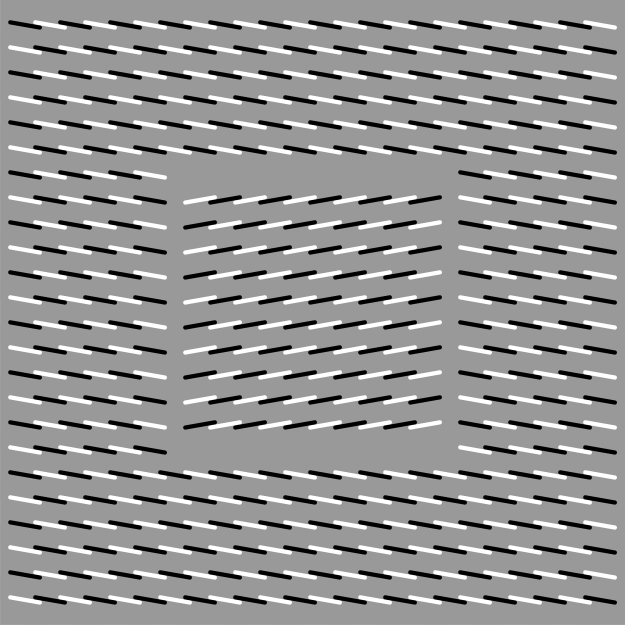Illusion of Y-junctions
Access since September 20, 2005

The elemental image
(copyright free; citation is necessary)
The horizontal edge on which black or white stars are placed appears to tilt counterclockwise. This configuration includes anomalous motion illusion, too.
Kitaoka, A., Pinna, B., and Brelstaff, G. (2001). New variations of spiral
illusions. Perception, 30, 637-646. ![]()
Kitaoka, A., Pinna, B., and Brelstaff, G. (2004). Contrast polarities determine
the direction of Cafe Wall tilts. Perception, 33, 11-20. ![]()
Also see:
Kitaoka, A. (2002) Trick Eyes. Tokyo: Kanzen. ![]()
Kitaoka, A. (2003) Trick Eyes 2. Tokyo: Kanzen. ![]()
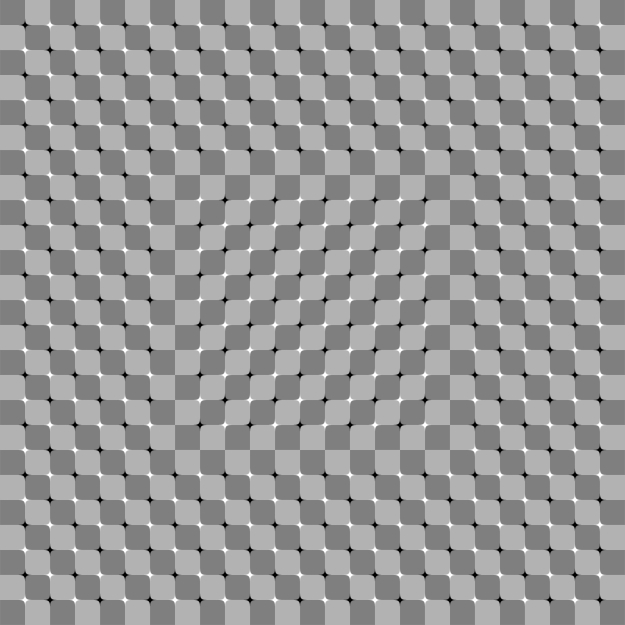
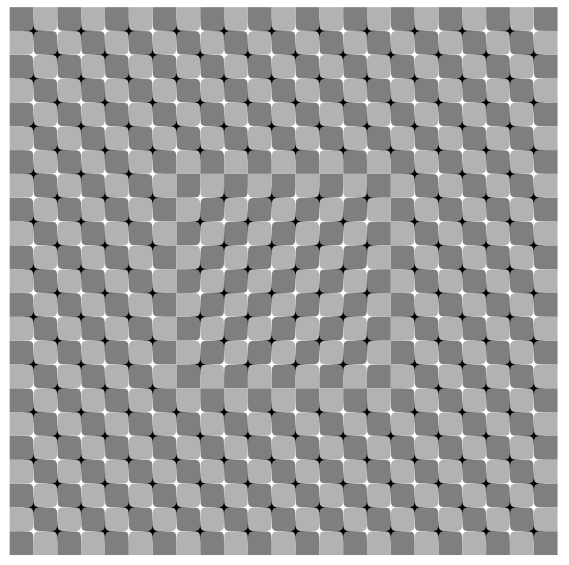
Nearly elemental image
Copyright A.Kitaoka 2005 (February 7)
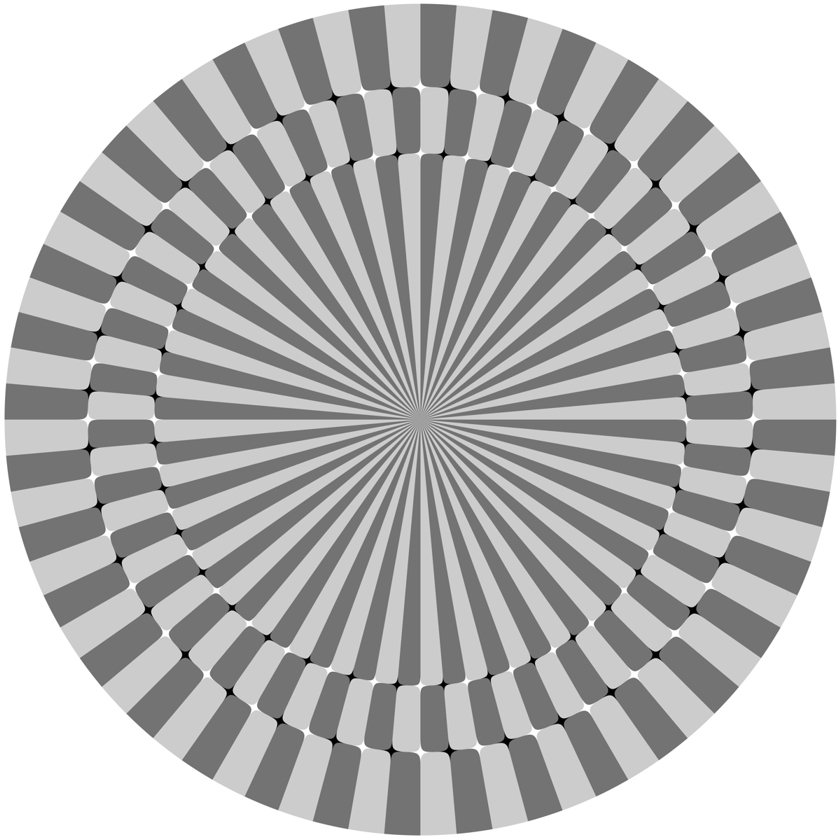
Rotating demonstration of the motion illusion aspect of the illusion of 'Y-junctions':
The inner ring appears to rotate counterclockwise and the outer ring clockwise when observers approach the image fixating at the center. On the other hand, the inner ring appears to rotate clockwise and the outer ring counterclockwise when observers move away from the image fixating at the center.
originally around 2000; Copyright Akiyoshi Kitaoka 2014 (August 2)
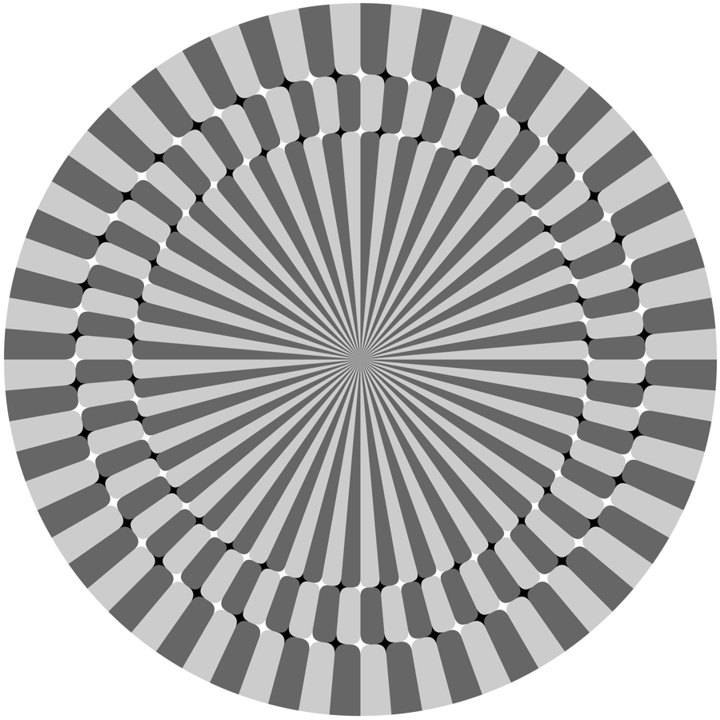
Rotating demonstration of the motion illusion aspect of the illusion of 'Y-junctions':
When fixating at the center and approaching or moving away from the image, observers see two rings rotate in the different directions.
originally around 2000; Copyright Akiyoshi Kitaoka 2013 (September 16)
Hopping appearance version
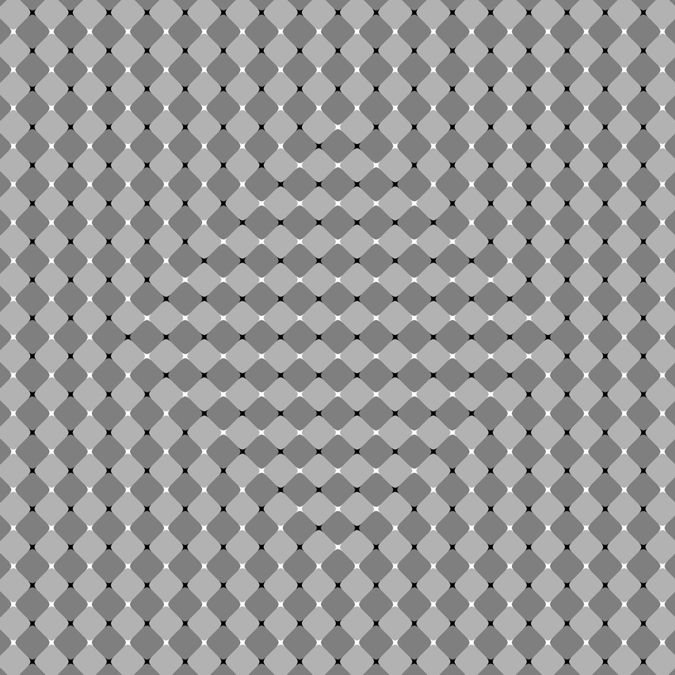
Copyright Akiyoshi Kitaoka 2011 (August 2)
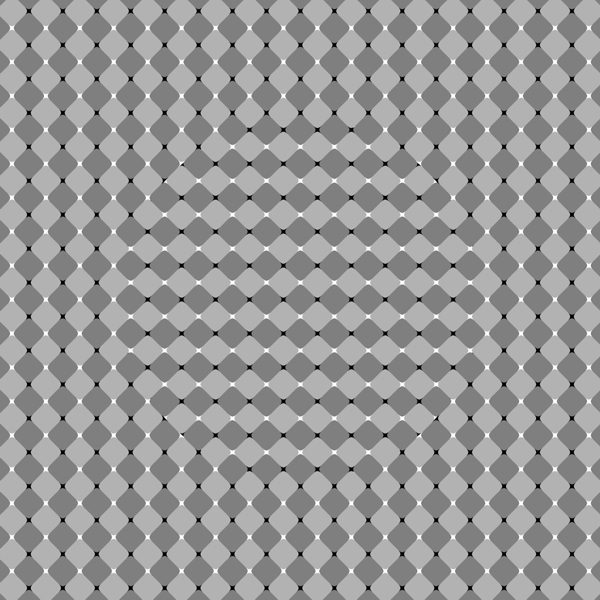
Copyright Akiyoshi Kitaoka 2011 (August 2)
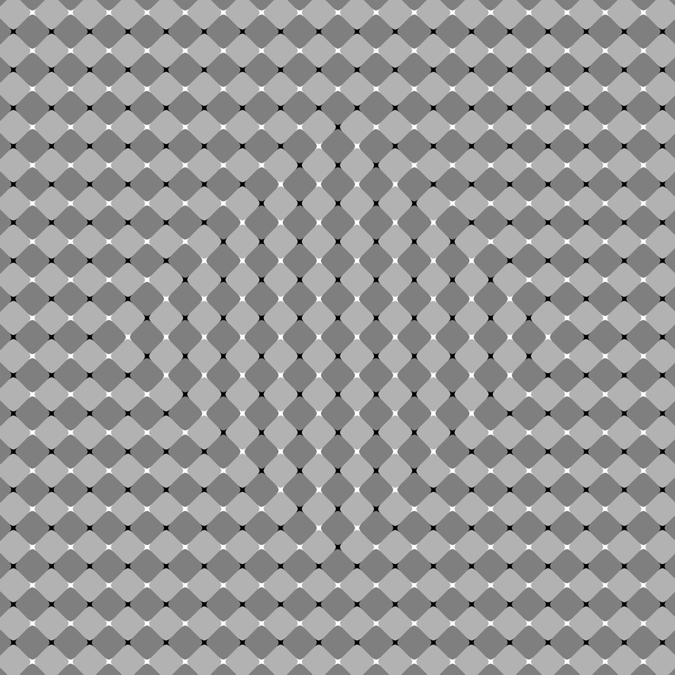
Copyright Akiyoshi Kitaoka 2011 (August 2)
Waving appearance version
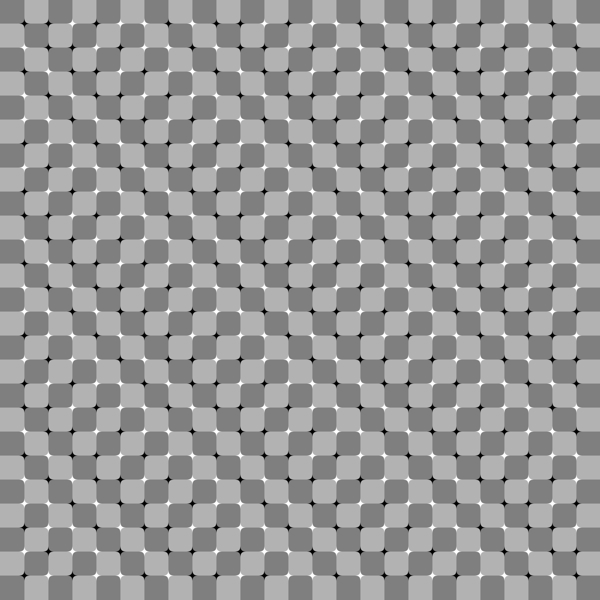
Copyright Akiyoshi Kitaoka 2011 (September 21)
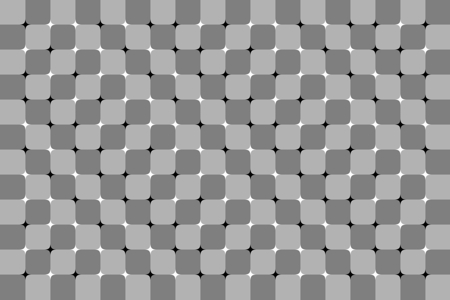
Copyright Akiyoshi Kitaoka 2011 (September 21)
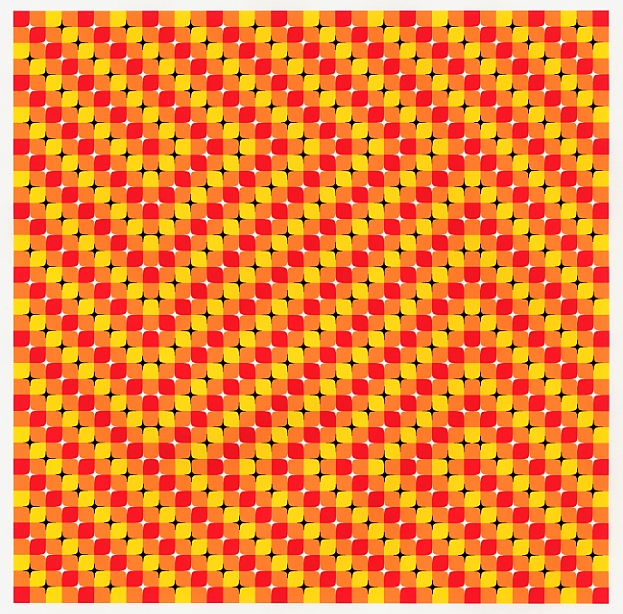
"The autumn color swamp"
The inset appears to move.
Copyright
A.Kitaoka 2000
(c)Akiyoshi
Kitaoka "Trick eyes" Tokyo: KANZEN 2002
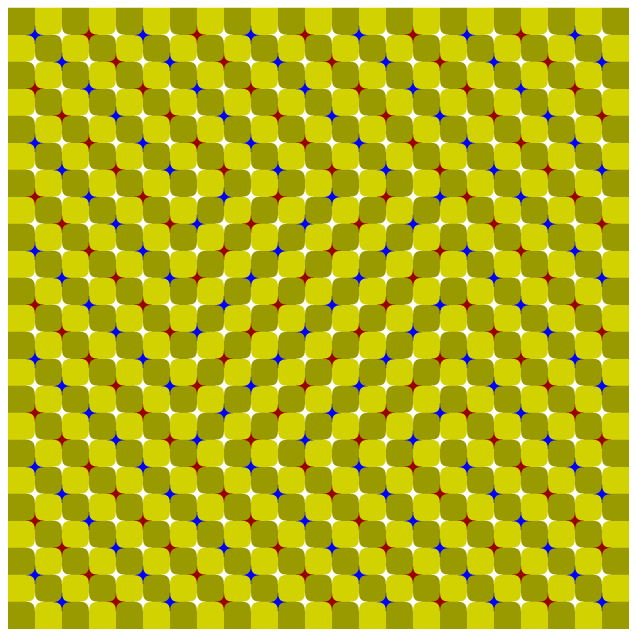
"Protective coloration"
The inset appears to move.
Copyright A.Kitaoka 2004 (July 16)
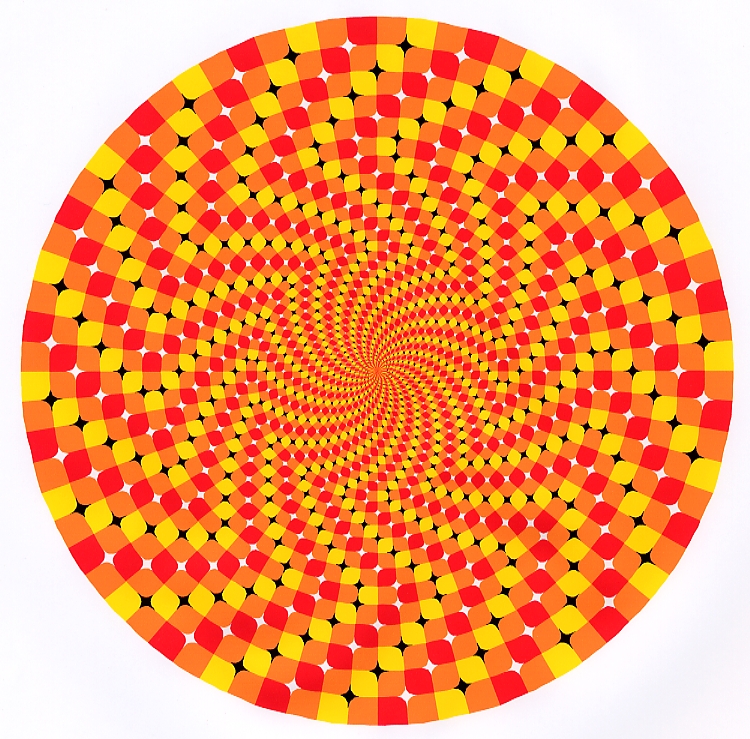
"A crab in the autumn color swamp"
The ring region appears to rotate when we approach or move away from the figure while fixating at the center.
Copyright A.Kitaoka 2002
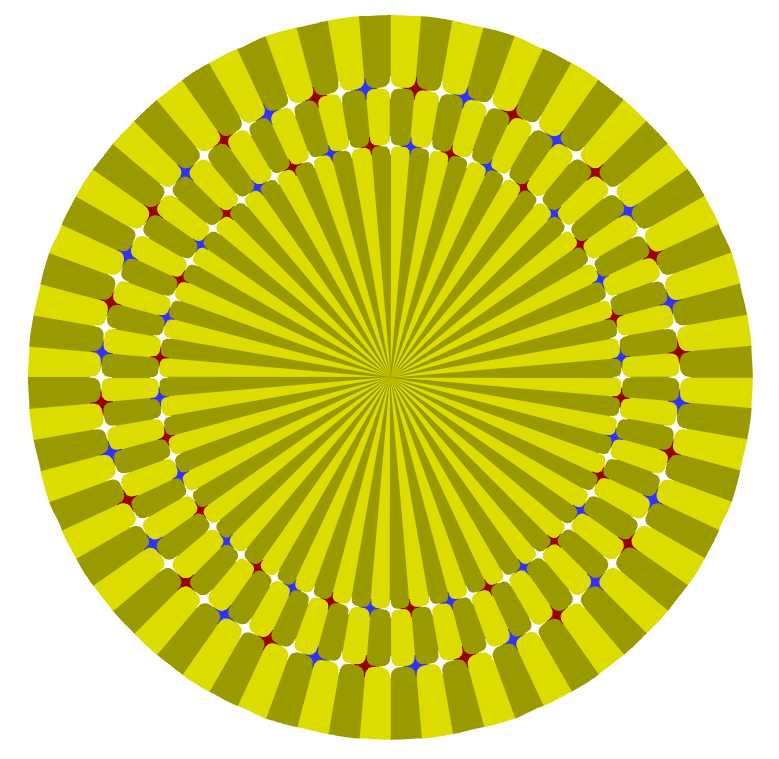
"Neural circuits"
The two concentric arrays of stars appear to rotate in the different directions when we approach or move away from the figure while fixating at the center.
Copyright
A.Kitaoka 2000
(c)Akiyoshi Kitaoka "Trick eyes" Tokyo: KANZEN
2002
My explanation <October 18, 2009>

